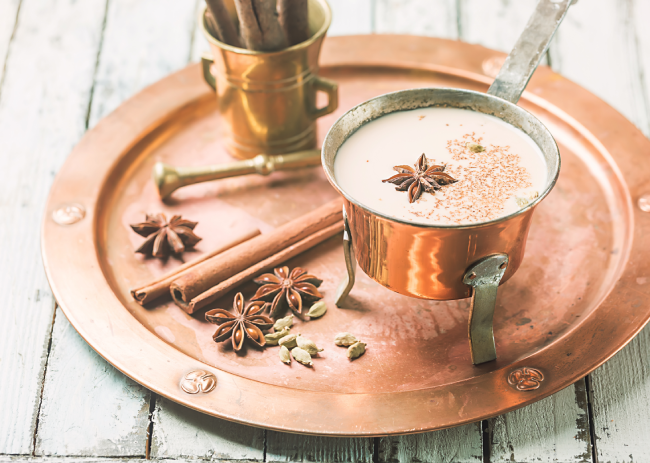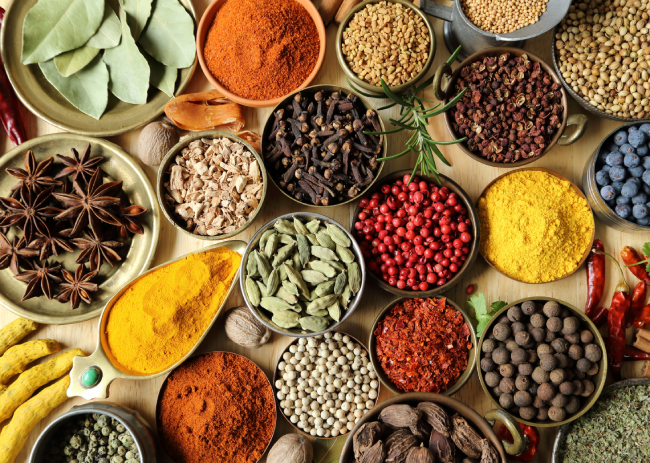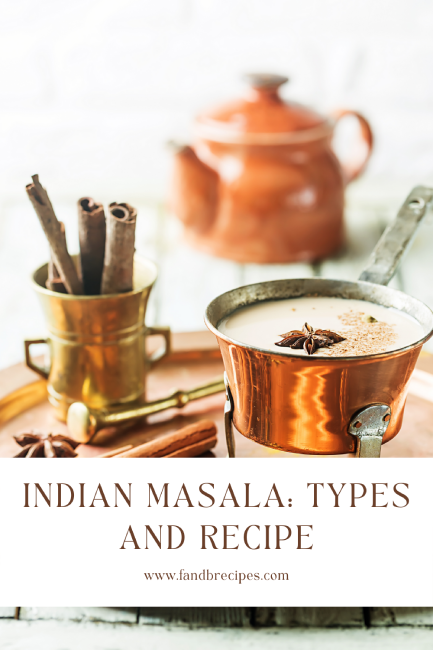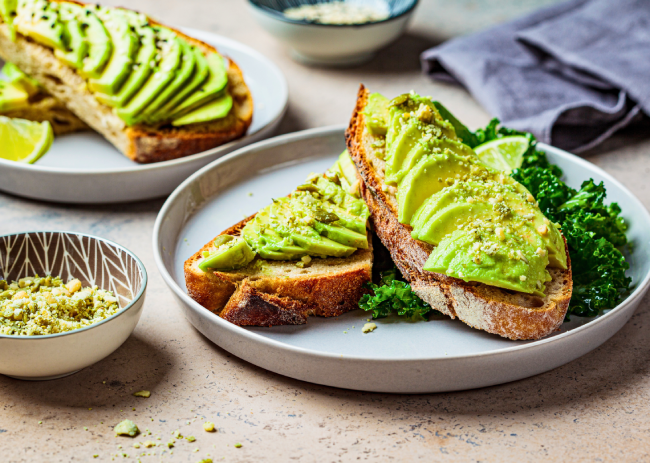Indian Masala: Meaning, Types and Recipe
Indian food is one of the most popular cuisines in many countries and spices are the key to any good Indian dish. Creating your own Indian masala is a rewarding experience allowing you to join the tradition of experimenting with spices and flavours.
It also means you can tailor the spice mix to your tastes. This hopes to be a guide to all your questions about masala as well as provide a recipe for chai masala.
What is Indian Masala?
Indian masala is a blend of spices that provide unique flavours to the dishes they are used in. In fact, the word masala is Hindi for “blend of spices”.
Each masala may contain a blend of only 2-3 spices or dozens. To make a basic masala powder you slowly dry roast the raw spices in a pan without oil or ghee. When completed you then grind the ingredients into a powder. The coarseness or fineness of the powder will depend on the recipe and type of masala you are making.
Indian masala will be characterised by the spices used and tend to start with a base of cardamom, cumin and black pepper. They also tend to use more aromatic spices like cinnamon and star anise in their flavourings to add a hint of sweetness.
How Did Indian Masala Originate?
Documentation about Indian spice mixes or masalas can be found from as early as the first century. Spice mixtures come from various regions and countries that all have their own stories and origins.
Indian masalas are many in number with kitchen staples like garam masala, chai masala, chaat masala and tandoori masala.
As said previously masala is the Hindi word for a blend of spices and so it is likely they are as old as the language itself. These are not only mixes used for flavouring and colouring food but were also used in traditional medicine to aid digestion and boost immunity.
Types of Indian Masalas
As a masala is simply a blend of spices, there are several Indian masalas that you can make. Each has its own flavours and are used for their own dishes.
Garam Masala is the most known and is a staple of Indian kitchens. It is used in many other Indian masalas as a base and is available to buy commercially worldwide. However, there are many other Indian masalas available.
Chaat masala is a common masala for street food that provides a sweet yet tangy taste to foods.
Tandoori masala is key in Punjabi cuisine and provides that signature red colouring we associate with these foods.
Chai masala is a tea spice mix that has gained popularity in Western cuisine as a warm drink alternative to coffee and hot chocolate.
There are so many Indian masalas available and several of them have their own regional variants. The key thing when it comes to masalas is to experiment with them to get a blend that suits your tastes.
Health Benefits of Eating Indian Masala
Masala provides flavour and colour to many dishes, but it is possible that it could also have health benefits. As I stated previously, masalas have their roots in traditional medicines with people taking them to help aid their digestion and boost their metabolism for centuries.
Nursing mothers are known to still give their children a masala of carom seeds and cumin to prevent them from getting gassy when being breastfed. Chai tends to be used to boost the immune system in the winter and its black pepper and ginger elements are believed to help with coughs and the common cold.
While there are no scientific studies to prove the health benefits of Indian masalas, many do contain antioxidants that are known to help your overall health and wellbeing. They protect cells from free radicals that may play a role in heart disease and cancers.
For example, garam masala is rich in antioxidants and is also believed to boost the immune system and lower cholesterol and blood sugar levels. While it’s not a guarantee you may find that eating foods with masalas more regularly helps balance out your diet more.
Ingredients Required to Make Indian Masala
An Indian masala is simply a mix of traditional spices to create a specific flavour profile. Most have cumin, coriander or cardamom as part of their ingredients and will be blended to match a specific flavour profile. For example, in our Chicken Manchurian recipe, the masala is a mix of salt, pepper and red chillies with extra chili powder to taste.
Each spice tends to have its own masala name that they are referred to in more traditional recipes, see FAQs for more information.
These spices may be already dried or may require you to dry roast on low heat in order to make your own blends.
To make your own blend other than the spices you will need a pan to dry roast the ingredients and a way to grind them into a powder. The easiest way to do this is with a blender but for coarser blends, it might be worth using a coffee grinder.
Tips to Make Indian Masala
Making your own Indian masalas are a rewarding experience. They allow you to find a flavour profile that fits your tastes and encourage you to experiment in the kitchen. There are a few recommendations we have if you are going to create a masala.
- Clean off the raw spices before using them. If you’re buying spices, you don’t know what adulterations have been made to the natural flavour or what additives have been added via pesticides. As such to get the best flavour we suggest giving them a wash clean before you use them.
- Dry roast ingredients that have been opened a long time or contain moisture. You want to create a powdered form of masala to store. As such you need to make sure you can grind all the ingredients without issue.
- Store in airtight containers. To keep your masalas fresh, you should keep them in an airtight container. For large quantities, it might be best to split the mix and store some of them in the refrigerator to give you longer shelf life.
- Label everything. For every container of Indian masala you make, you should label them with the mix name, the ingredients and the date it was created. This allows you to keep track of what you have available and what needs to be replaced.
Indian Masala Chai Recipe
Chai is one of the most popular masalas available and has found mainstream appeal in the west having been adopted by chains like Starbucks on their menus.
Chai lattes provide you with a warming alternative to coffee or hot chocolate with a sweet tang that balances its unique flavours.
It most likely got its name from Chá, the Chinese word for tea. While you can buy blends in shops there is nothing like making your own chai mix that you can use as you desire.
Bulk Indian Chai Masala Recipe
Serves: 100 cups at 1 tsp per serving (About 2 cups of dry mix) Prep Time: 15 minutes. Cuisine: Indian
Ingredients:
1 cup of tea leaves (preferably Darjeeling but you can choose based on your preference), 3 tablespoons of ginger (dried or fresh, though you will need to dry roast if fresh), 3 tablespoons of green cardamom pods, smashed, 1 tablespoon of cloves (coarsely ground), 3 tablespoons of star anise (roughly chopped), 4 cinnamon sticks (coarsely ground), 1 tablespoon of peppercorns (smashed), ¼ cup of stevia leaves (optional).
Directions:
Wash the ginger, cardamom, star anise, cloves, peppercorn and cinnamon. Dry these as much as possible before the next step. Mix the ginger, cardamom, star anise, cloves, peppercorn and cinnamon together. Dry roast as needed over low heat without any oil or ghee until the moisture is removed from the ingredients. If you are using already dried ingredients, you may skip the roasting stage unless the ingredients are still moist or have been sitting a while. Grind the mix up into a coarse powder to ensure the mix infuses evenly. Don’t make the powder too fine. You could use a blender or a coffee grinder to do so. Mix this coarse powder into the tea leaves ready to steep. OPTIONAL: Add crushed stevia to give the chai sweetness without needing to add honey or sugar at a later point. This can be good if you are on a restricted sugar diet. Store in an airtight container for use as needed. You can do so loose or add a teaspoon to individual teabags if you prefer.
Nutrition Information
For 1 Teaspoon of chai masala, brewed with no added milk or sugar:
| Calories | 3kcal |
| Carbohydrates | 1g |
| Protein | 1g |
| Fat | 1g |
| Saturated Fat | 1g |
| Sodium | 1mg |
| Potassium | 13mg |
| Fiber | 1g |
| Sugar | 1g |
| Vitamin A | 2iu |
| Vitamin C | 1mg |
| Calcium | 6mg |
| Iron | 1mg |
You can brew chai on its own, but the most common use is in a chai latte.
Brewing Guide for Chai Latte
- Add water to a pan and bring to a boil before allowing it to simmer very gently.
- Remove the pan from the heat and add a teaspoon of the chai mix for each cup you are serving. Allow the mix to steep for 5-10 minutes depending on preferred strength. You may want to steep for a shorter time if you are using green tea as your base.
- Add milk or a milk substitute to the tea and bring the pot back up to a gentle simmer to ensure it’s hot when served.
- Strain the mixture using individual filters if you are brewing one cup or for larger quantities try a filtered teapot or French press. Pour and add honey or sugar to taste.
For changes to the flavour profile try adding dried rose petals, nutmeg and/or saffron. Experiment until you find the right blend for you. For individual cups, it may be worth investing in reusable tea bags that you refill when you make a new batch of chai. You may even be able to find DIY guides online to make these yourself using old clean cotton tops.

Bulk Indian Chai Masala Recipe
Ingredients
- 1 cup of tea leaves (preferably Darjeeling but you can choose based on your preference)
- 3 tbsp ginger dried or fresh, though you will need to dry roast if fresh)
- 3 tbsp green cardamom pods smashed
- 1 tbsp cloves coarsely ground
- 3 tbsp star anise roughly chopped
- 4 cinnamon sticks coarsely ground
- 1 tbsp peppercorns smashed
- ¼ cup of stevia leaves (optional)
Instructions
- Wash the ginger, cardamom, star anise, cloves, peppercorn and cinnamon. Dry these as much as possible before the next step.
- Mix the ginger, cardamom, star anise, cloves, peppercorn and cinnamon together. Dry roast as needed over low heat without any oil or ghee until the moisture is removed from the ingredients. If you are using already dried ingredients, you may skip the roasting stage unless the ingredients are still moist or have been sitting a while.
- Grind the mix up into a coarse powder to ensure the mix infuses evenly. Don’t make the powder too fine. You could use a blender or a coffee grinder to do so.
- Mix this coarse powder into the tea leaves ready to steep.
- OPTIONAL: Add crushed stevia to give the chai sweetness without needing to add honey or sugar at a later point. This can be good if you are on a restricted sugar diet.
- Store in an airtight container for use as needed. You can do so loose or add a teaspoon to individual teabags if you prefer.
Notes
Brewing Guide for Chai Latte
- Add water to a pan and bring to a boil before allowing it to simmer very gently.
- Remove the pan from the heat and add a teaspoon of the chai mix for each cup you are serving. Allow the mix to steep for 5-10 minutes depending on preferred strength. You may want to steep for a shorter time if you are using green tea as your base.
- Add milk or a milk substitute to the tea and bring the pot back up to a gentle simmer to ensure it’s hot when served.
- Strain the mixture using individual filters if you are brewing one cup or for larger quantities try a filtered teapot or French press. Pour and add honey or sugar to taste.
FAQs
What Is An Indian Masala?
Indian masala is a blend of traditional Indian spices usually dry roasted and ground into a powder. This blend of spices is used to add flavour and colour to a dish. They tend to be made up of coriander, cardamom, cumin and/or black pepper. Masala is Hindi for “blend of spices” and garam masala tends to be the most widely known variant. Indian masalas tend to come from traditional cooking practices of experimenting with spice mixes to get the right flavour profile and products like chai or garam masala can be widely bought commercially in the west. However, they are traditionally made by hand to ensure it matches your own tastes.
What Are The 7 Indian Spices?
While there are various spices used in Indian masalas the seven most common are:
- Garam Masala
- Coriander
- Cardomom
- Cumin
- Tumeric
- Red Chili
- Black Pepper
Garam masala tends to be considered a spice as it is used in various masalas like Chaat Masala. It basically becomes a shorthand for those ingredients together and every household will have its own preferred garam masala mix. Most blends will use a base of cardamom, cumin and black pepper.
What Are The 40 Indian Spices?
There are 40 Indian masalas or spices used in various blends. The table below lists their English names and Masala names. You may find they are referred to by their masala names in more traditional recipes.
| English Name | Masala Name |
| Cardamom | Elacichi |
| Black Cumin | Kalonji |
| Asafoetida | Hing |
| Nutmeg | Jaiphal |
| Black Pepper | Kaali Mirch |
| Dried Mango Powder | Amchoor |
| Red Chilli/Pepper | Laal Mirch |
| Ginger | Adrak |
| Tumeric | Haldi |
| Garlic | Leshun |
| Bay Leaf | Tej Patta |
| Basil Seeds | Sabja |
| Coriander Seeds | Sabut Dhaniya |
| Holy Basil | Tulsi |
| Carom Seeds | Ajwain |
| Mace | Javitiri |
| Cumin | Jeera |
| Brown Mustard | Rai |
| Cloves | Laung |
| Mustard Seeds | Sarson Dana |
| Garam Masala | Garam Masala |
| Fennel Seeds | Badi Shep |
| Fenugreek Leaves | Kasturi Methi |
| Star Anise | Chakri Phool |
| Cinnamon | Daalchini |
| Poppy Seeds | Khus Khus |
| Saffron | Kesar |
| Curry Leaves | Kari Patta |
| Black Cardamom | Badi Elaichi |
| Coriander Powder | Dhaniya Powder |
| Fenugreek Seeds | Methi Dana |
| Cassia Bark | Jangalee Dalchini Chaal |
| Tamarind | Imli |
| Sesame Seeds | Til |
| Pomegranate Seeds | Anar Dana |
| Mint | Pudhina |
| Ginger Powder | Adrak Powder |
| Gooseberry Grass Powder | Amla Powder |
| Onion | Pyaaj |
This is by no means the ultimate list and I encourage you to investigate these spices more and read other articles on this subject for a wider array of information.
What Indian Masala Is Best?
Garam Masala is the most popular and the one used most frequently in dishes alongside other Indian masalas. It can be bought commercially in a wide variety of shops and is made up of cumin, cardamom, cinnamon, cloves and peppercorns.
Star anise, bay leaves and fennel may also be added to the mixture. All traditional households have their own variations of this masala and it’s worth investigating and experimenting on your own.
However, there is no one masala I think anyone can say is the best as it all comes down to personal tastes and preferences. Chai and chaat masalas are also popular in their own rights and are distinct from garam masala.
Is Garam Masala Same As Curry Powder?
Curry powder and garam masala may seem similar on paper but are actually very different spice mixes. While they both add flavour and colour to dishes, they are their own masalas with some similar ingredients.
In addition to cumin, cinnamon, cardamom and pepper, curry powder uses turmeric which is something that is not added to garam masala. It’s this turmeric that gives curry powder its distinct yellow colour and more earthy flavour.
Curry powder will also likely contain chili, mustard and coriander. Garam masala is more aromatic as is seen by the cloves and optional additions of star anise or fennel. It tends to have a sweeter flavour overall which is what has given it such a mainstream appeal.
In Conclusion
Masalas are a core part of Indian cuisine and have been used for centuries to add flavour and colour to food as well as in traditional medicine. They evoke traditional Indian cooking methods that encourage you to experiment with flavours and find the right blend for you. There are several basic Indian masala mixes for you to try with garam masala being the most popular as well as chaat and chai blends.
It is possible to make large quantities of Indian masala in advance that, if stored properly, have a decent shelf life. While many Indian masalas are available to buy commercially nowadays it is worth making from scratch to ensure your tastes are met.
Try out our chai recipe and experiment with it to get it right for your tastes. Once you have a good grip on that we suggest looking into garam masala as your next step in your Indian culinary journey. Happy cooking!
Writer Madeline Miller, Custom Paper Writing Service UK, is a fan of cooking and experimenting with flavours in the kitchen.






Great chai recipe
I’m gonna try this for sure today. Thank you for this tempting recipe of tea. Monsoon+Tea is a good combination for sure.
Indian masalas are best 👍 it gives a awesome taste 👌
Thanks for the beautiful explanation indian spices.
Helpful in recipes😋😋
Yea Is the ultimate escape from everything, this recipe is too good
Superb and Informative👌
Indian spices are best!! ❤
Passionate to try recipe 💖
The spices that make everything better
Beautifully explained! Amazing recipe too 🤤
informative idea!
Very informative
What is Indian food without spices!?🤌🏻😍
Nothing can beat a cup of Hot Indian Masala chai. It’s a Soul food!
super tasty
Masala chai isn’t a drink, it’s an emotion! Great recipe 💫
Indian masala got to be my fav.
Speciality of India at it’s best😍❤️
A nice Hot cup of masala chai in a rainy day will be a pure bliss 😊
I am grateful to be an Indian one of the reason is food and its incomplete without these spices🥰
Helpful information
The types of indian masalas – section is my favourite part in this article!
knowledgeable
Indian masala is the king of the kitchen. helpful to know the exact use and method of the Indian masala through your blog. informative message.
tasty and yumm
Indian masala has a great impact in every Indians life so Happy to see these such recipe.
incredible!!
Informative idea
You have no idea how excited I’m to try this dish!
Mouth-watering and the idea of the recipe is superb
There are so much to Indian masala range than we already knew 😯
There is no need of buying masalas now i can make masalas at home it sounds fantastic…!!😻
I am so glad to know how to make masala in few easy steps!!😻
So much of variants!! Good to Know!!!
Mouth watering recipe. Loved to try it in home.
superb recipe
Is there any food without masala????? Just love this!!!!
tasty and yummy!!
Never knew these many masalas existed…. So proud to be an Indian after seeing these extraordinary things….
Blend of spices makes everything perfect, thank you for sharing this
indian masalas have the power to add the taste to the life of food
So informative, everything is explained in detail!
This is an informative post
i love your blog
There are so much to Indian masala range than we already knew
Authentic,Indian masalas
Indian Masala mouth watering recipe. Thanks for sharing.
very helpful
Helpful!! got to know many indian spices and masalas
Very informative and helpful
Got to know many more new masala names after reading this…
VERY INFORMATIVE!
I just found this so amazing and helpful.
Everything is explained so well and informative.
MUST TRY
Nothing beats indian masala
Indian masala just like Taste of mother’s hand food
Indian masala are the ideal of Indian dishes. It has good taste and aroma. Need of every dish.
Thanks for the infomation its very useful & got to know about various spices….
You always have the perfect and correct information I need everytimee! Such a lifesaver
home made masala’s are good for health…..looking nice
now i know how to make it thanks
Amazing information…
so infomative nice
Indian Masala means to grandmother hand’s food taste
Informative and useful explaination
indian masala is found in every indian home, this blog was of great help
very informative.
This article is really amazing and you found Indian masala in every home, indian masale gave taste in our tasty and delicious food.
A very homie blog….
Great share !
This was of great help, Thank you!
Your blogs are really MASALE-DAAR !!
Nice blog thank you for sharing
teas and winters go hand in hand…good blog….
Nice blog
good 100/100!!!
goog !!
nothing can beat Indian chai…
indian spices are amazing!
Amazing recipe!
I always used to wonder about Indian Masala’s but this article gave me a clear idea as to how it originated and its names. Thanks for the chai recipe.
Thanks for sharing such unique recipes!
Such a informative and nice blog .
Thanks for sharing
Tasty!
Thanks for the recipe!
Really nice recipe!
my favorite … Indian spices
Very tasty.
Good recipe.
Indian spices and this is it!!